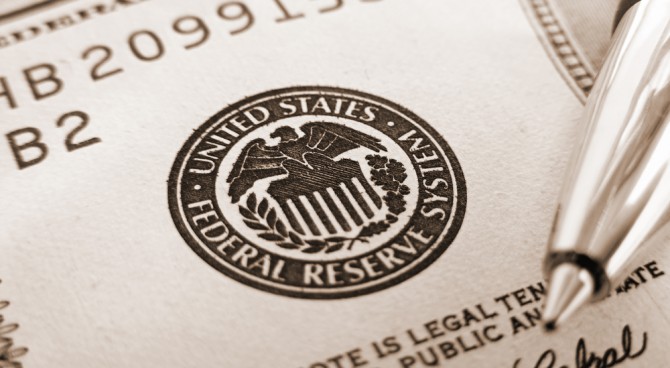Affordable-housing goals established in the 1990s led to a massive increase in risky, subprime mortgages.
By Phil Gramm and Mike Solon*
Simply put, the financial crisis of 2008 was caused by a lot of banks making a lot of loans to a lot of people who either could not or would not pay the money back. But this explanation raises two key questions. Why did private lenders, whose job it was to assess credit risk, make those loans? And why did the army of financial regulators, with massive enforcement powers, allow 28 million high-risk loans to be made?
There’s a strong case that the answers can be traced to Sept. 12, 1992. On that day presidential candidate Bill Clinton proposed, in his campaign book “Putting People First,” using private pension funds to “invest” in government priorities, such as affordable housing, to “generate long-term, broad based economic benefits.” Seldom has such a radical proposal been so ignored during a campaign only to later lead to such devastating consequences.
After his election, President Clinton tapped Labor Secretary Robert Reich to lead the effort to extract, as Mr. Reich put it in 1994 congressional testimony, “social, ancillary, economic benefits” from private pension investments. Mr. Reich called on pension funds to join the administration’s “Economically Targeted Investment” effort. Housing and Urban Development Secretary Henry Cisneros assured participants that “pension investments in affordable housing are as safe as pension investments in stocks and bonds.”
Six pension funds ultimately agreed to invest in public housing that was backed by $100 million in federal grants and guarantees, but the program never took off. In the end, even unions and their pension funds rejected the effort to direct any part of their retirement savings toward someone else’s welfare.
The Clinton administration lost the battle to use pensions to fund low-income housing, but it succeeded in winning the war by drafting Fannie Mae, Freddie Mac and the commercial banking system into the affordable-housing effort. It did so by exploiting a minor provision in a 1977 housing bill, the Community Reinvestment Act, that simply required banks to meet local credit needs.
Bank regulators began to pressure banks to make subprime loans. Guidelines became mandates as each bank was assigned a letter grade on CRA loans. Banks could not even open ATMs or branches, much less acquire another bank, without a passing grade—and getting a passing grade was no longer about meeting local credit needs. As then-Federal Reserve Chairman Alan Greenspan testified to Congress in 2008, “the early stages of the subprime [mortgage] market . . . essentially emerged out of the CRA.”
Effective in January 1993, the 1992 housing bill required Fannie and Freddie to make 30% of their mortgage purchases affordable-housing loans. The quota was raised to 40% in 1996, 42% in 1997, and in 2000 the Department of Housing and Urban Development ordered the quota raised to 50%. The Bush administration continued to raise the affordable-housing goals. Freddie and Fannie dutifully met those goals each and every year until the subprime crisis erupted. By 2008, when both government-sponsored enterprises collapsed, the quota had reached 56%. An internal Fannie document made public after the financial crisis (“HUD Housing Goals,” March 2003) clearly shows that by 2002 Fannie officials knew perfectly well that these quotas were promoting irresponsible policy: “The challenge freaked out the business side of the house [Fannie] . . . the tenseness around meeting the goals meant that we . . . did deals at risks and prices we would not have otherwise done.”
The mortgage market shows the dramatic results of this shift in policy. According to the nonprofit National Community Reinvestment Coalition, total CRA lending rose to $4.5 trillion in 2007 from $8 billion in 1991. The American Enterprise Institute’s Ed Pinto found that in 1990 80% of the residential mortgage loans acquired by Fannie and Freddie were solid prime loans with healthy down payments and a well-documented capacity by borrowers to make mortgage payments. By 1999 only 45% of their acquisitions met this standard. That number fell to 15% by 2007. By 2008, roughly half of all outstanding mortgages in America were high-risk loans. In 1990, very few subprime loans were securitized. By 2007 almost all of them were.
Everything appeared to work fine as long as accommodative monetary policy and capital inflows from developing countries continued to fuel the upward float of housing prices. Home ownership grew to 69% in 2006 from 64% in 1993, but when monetary policy tightened the housing bubble broke and the mortgage-default rate soared.
It is stunning that, to this day, no one has explained how 28 million high-risk loans (the number calculated by the American Enterprise Institute’s Peter Wallison) got around the “safety and soundness” rules that dominate federal and state banking laws. What happened to the enforcement army, with its laws and regulations, its power to investigate and mandate corrective action, and its ability to fine and imprison violators?
The people who destroyed lending standards by driving subprime lending blamed banks, greed and deregulation for causing the financial crisis. But a review of the banking laws adopted since 1980 reveals that not one single safety and soundness measure was repealed.
Whatever went on inside the various agencies, financial regulators—whose job it was to enforce safety and soundness regulations—in the end deferred to government affordable-housing goals. Conflicted laws created conflicted regulations and conflicted regulators. Safety and soundness considerations required that regulators step on the brake. Affordable-housing goals required them to step on the gas. Government policy tried to make private wealth serve both government and private purposes. But wealth cannot serve two masters, and in the end the government was the dominant master.
*Mr. Gramm, a former Republican chairman of the Senate Banking Committee, is senior partner of US Policy Metrics and a visiting scholar at the American Enterprise Institute. Mr. Solon, a former economic policy adviser to Senate Republican leader Mitch McConnell, is a partner at US Policy Metrics.





